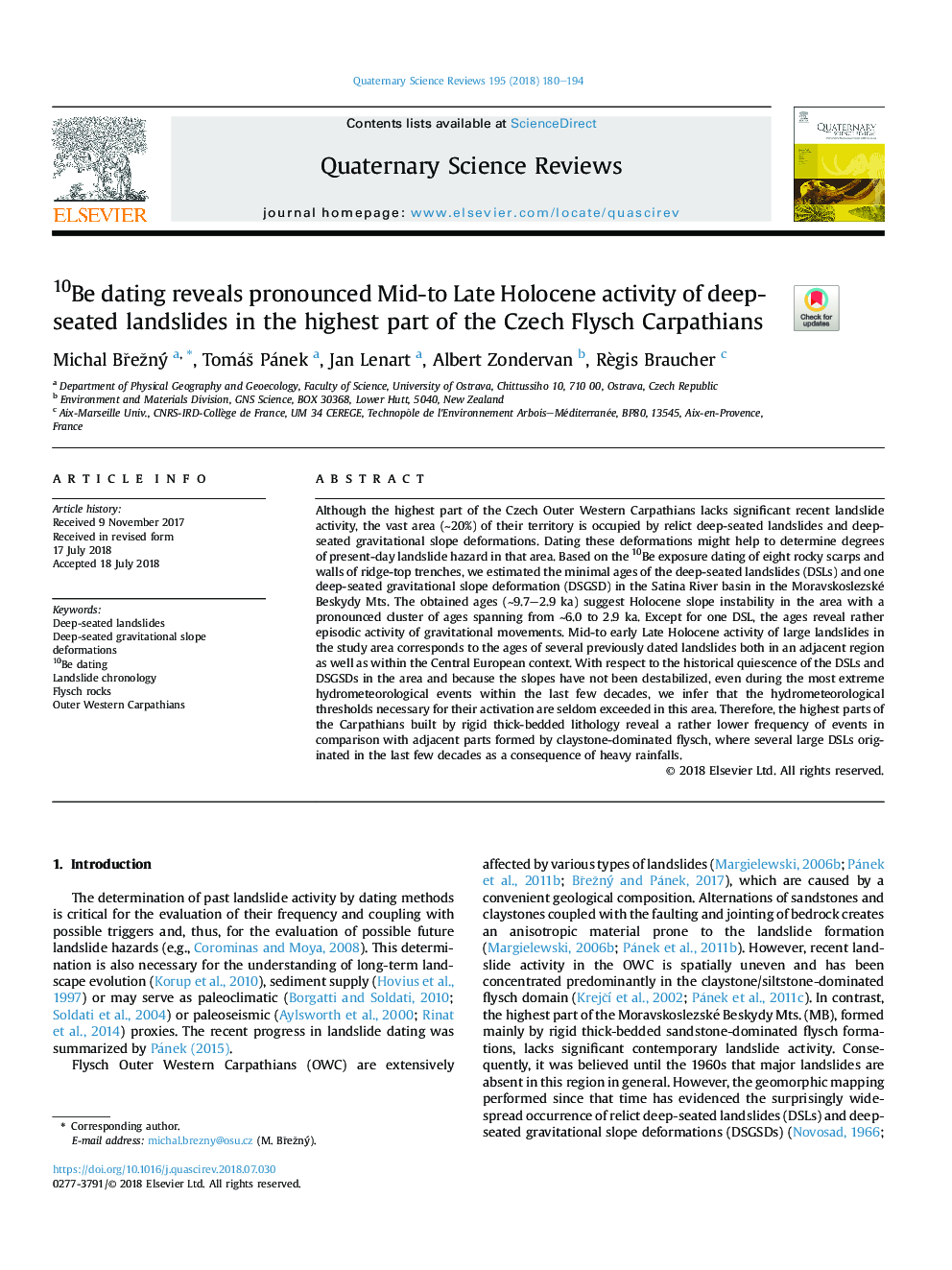| کد مقاله | کد نشریه | سال انتشار | مقاله انگلیسی | نسخه تمام متن |
|---|---|---|---|---|
| 8914648 | 1640740 | 2018 | 15 صفحه PDF | دانلود رایگان |
عنوان انگلیسی مقاله ISI
10Be dating reveals pronounced Mid-to Late Holocene activity of deep-seated landslides in the highest part of the Czech Flysch Carpathians
دانلود مقاله + سفارش ترجمه
دانلود مقاله ISI انگلیسی
رایگان برای ایرانیان
کلمات کلیدی
موضوعات مرتبط
مهندسی و علوم پایه
علوم زمین و سیارات
زمین شناسی
پیش نمایش صفحه اول مقاله

چکیده انگلیسی
Although the highest part of the Czech Outer Western Carpathians lacks significant recent landslide activity, the vast area (â¼20%) of their territory is occupied by relict deep-seated landslides and deep-seated gravitational slope deformations. Dating these deformations might help to determine degrees of present-day landslide hazard in that area. Based on the 10Be exposure dating of eight rocky scarps and walls of ridge-top trenches, we estimated the minimal ages of the deep-seated landslides (DSLs) and one deep-seated gravitational slope deformation (DSGSD) in the Satina River basin in the Moravskoslezské Beskydy Mts. The obtained ages (â¼9.7-2.9 ka) suggest Holocene slope instability in the area with a pronounced cluster of ages spanning from â¼6.0 to 2.9 ka. Except for one DSL, the ages reveal rather episodic activity of gravitational movements. Mid-to early Late Holocene activity of large landslides in the study area corresponds to the ages of several previously dated landslides both in an adjacent region as well as within the Central European context. With respect to the historical quiescence of the DSLs and DSGSDs in the area and because the slopes have not been destabilized, even during the most extreme hydrometeorological events within the last few decades, we infer that the hydrometeorological thresholds necessary for their activation are seldom exceeded in this area. Therefore, the highest parts of the Carpathians built by rigid thick-bedded lithology reveal a rather lower frequency of events in comparison with adjacent parts formed by claystone-dominated flysch, where several large DSLs originated in the last few decades as a consequence of heavy rainfalls.
ناشر
Database: Elsevier - ScienceDirect (ساینس دایرکت)
Journal: Quaternary Science Reviews - Volume 195, 1 September 2018, Pages 180-194
Journal: Quaternary Science Reviews - Volume 195, 1 September 2018, Pages 180-194
نویسندگان
Michal BÅežný, TomáÅ¡ Pánek, Jan Lenart, Albert Zondervan, Règis Braucher,